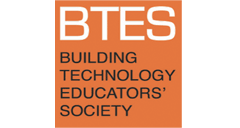The Kind of Problem Technology Is: A Case for Integrated Models of Architectural Technologies Education
Author ORCID Identifier
DOI
https://doi.org/10.7275/btes.474
Abstract
Shifts toward models of organized complexity, a concept adopted from the writings of Jane Jacobs, have begun to appear within the mainstream disciplinary activities of practicing architects. As educators we feel a responsibility to align our curriculum with these innovations in practice, namely an increased capacity to consider complex technologies relative to rather than in isolation from one another.
The authors have reconsidered traditionally siloed technology topics such as materials, methods of construction, and environmental controls as systems and included issues of site in a series of short modules taught across the span of a 30-week academic year. This is part of a larger curricular effort to reorganize and rebrand six relatively unrelated technology courses into Architectural Technology Fundamentals 1, 2 and 3 for second year students and Building Systems Integration 1, 2 and 3 for third year students.
This approach avoids segregation and oversimplification of site and technical issues by fostering an understanding of three interrelated knowledge areas: site and contextual systems, energy and environmental systems, and material and building systems. The Site and Contextual Systems modules introduce methods of reading and responding to a variety of situational typologies from densely bound urban contexts to more open rural sites with varied landform. The Energy and Environmental Systems modules focus on passive, climate appropriate, strategies for human thermal comfort and health. The Material and Building Systems modules introduce students to the properties of materials and the principles of assemblies while connecting these considerations to issues of site systems and energy systems.
The authors establish a theoretical basis for the consideration of architectural technology as a problem of organized complexities, discuss restructuring around three new knowledge areas, expand on revised teaching methodologies and assessments, and provide a critical reflection
Recommended Citation
Arens, Robert; Osborn, Brian; and Trudell, Carmen
(2018)
"The Kind of Problem Technology Is: A Case for Integrated Models of Architectural Technologies Education,"
Building Technology Educator's Society: Vol. 2019
Caryn Brause, Peggi L. Clouston, Naomi Darling (Eds.), Amherst, MA, 2019.
https://doi.org/10.7275/btes.474
Available at:
https://scholarworks.umass.edu/btes/vol2019/iss1/57

